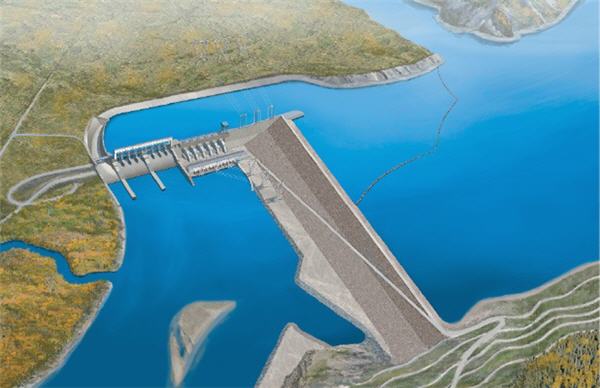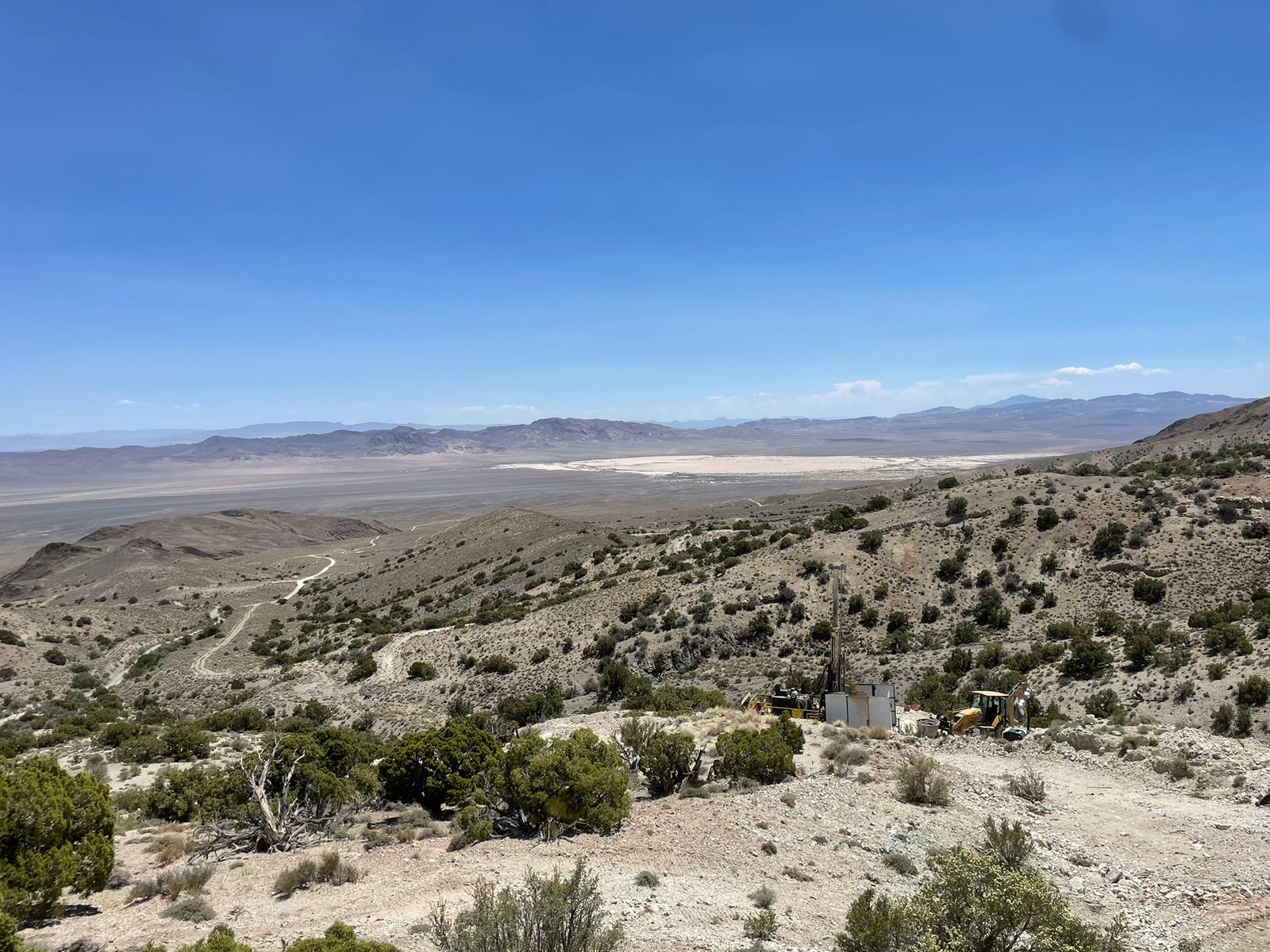Site C dam gets green light

Construction on the dam, now estimated to cost $8.5 billion – $600 million more than the price tag used when it was reviewed by a joint environmental review panel – is expected to power up in 2024.
Site C dam, which may have gone over budget before a shovel even turned sod, has been given the green light.
“Building major dams like Site C will build on that proven record we have here almost uniquely in our province of delivering inexpensive power when and where we need it,” said Premier Christy Clark.
Construction on the dam, now estimated to cost $8.5 billion – $600 million more than the price tag used when it was reviewed by a joint environmental review panel – is expected to power up in 2024.
With a capacity of 1,100 megawatts and 5,100 gigawatts of power per year, it would produce enough electricity to power 450,000 homes.
Both the BC Chamber of Commerce and BC Business Council support the mega-project. Large hydroelectric dams have proven to be a major economic engine for industry in B.C.
Rio Tinto Alcan’s aluminum smelter in Kitimat, for example, could not have been built without access to relatively cheap power, and it is expected B.C. will need more power as new mines and liquefied natural gas plants are built.
But Site C’s construction could present a paradox: It could drain B.C.’s skilled labour pool, adding inflation to the B.C. Liberal government’s other energy priority: liquefied natural gas.
At its peak, the dam’s construction would employ roughly 1,400 people per year over a two-year period, and about 800 per year over a four-year period.
One of the projects that could be competing with Site C for workers is a proposed new gas refinery in Chetwynd, which would use natural gas to produce gasoline.
Blue Fuel Energy’s Sundance Fuels plant would require about 2,000 workers at its peak, and the company’s president, Juergen Puetter, fears Site C could put a huge strain on B.C.’s skilled labour pool, especially if pipelines and LNG plants are being built around the same time.
“If they all go at the same time, then labour costs will go right through the roof,” Puetter said.
B.C.’s independent power sector has argued that it could meet B.C.’s increasing power needs with wind power, run-of-river and even geothermal power.
Although Site C will decrease the role that independent power producers will play in meeting B.C.’s energy needs, it’s not the sector’s death knell, said Paul Kariya, executive director for Clean Energy BC.
“I can’t foresee an option that does not include an opportunity for the clean energy sector going forward,” Kariya said.
B.C. ratepayers will not start paying for Site C until after it is built.
David Craig, executive director for Commercial Energy Consumer’s Association, said the businesses his organization represents generally supports Site C.
“The business community consumers that I’ve been talking to have been largely supportive of hydroelectric projects,” he said. “They’ve seen the value of them from the past.”
But Craig fears that, even at the new price tag of $8.5 billion, the project may not come in on budget.
“The experience that I have, having reviewed all the dam projects that Hydro has ever built, they don’t come in under budget. I can anticipate that may be more costs, as the minister (Bill Bennett) has indicated there might be.”
Despite the government green light, the dam still faces hurdles, including several legal challenges.
The Peace Valley Landowners Association has filed for a judicial review of a joint environmental review panel’s decision approving the project. So have several First Nations, including four bands belonging to the Treaty 8 Tribal Association.
Site C dam’s 83-kilometre reservoir would run from Hudson’s Hope to Fort St. John, and would require the flooding of more than 5,560 hectares of land, including 3,225 hectares of agricultural land, 591 hectares of which is farmland that is in production, according to BC Hydro.
The dam’s estimated budget has gone from $3.2 billion in 2004, to $6 billion in 2006, to $7.9 billion in 2011 to $8.5 billion as of last week.
Rob Botterell, the lawyer representing the Peace Valley Landowners Association, said the revised numbers for Site C bolsters the association’s legal argument, which is that government regulators erred in ignoring some key findings of the joint review panel.
One of the panel’s recommendations was that the BC Utilities Commission should review the dam’s costs and revenue requirements – something the B.C. government has ruled out.
The association argues that the government has not made an economic case for Site C, something Botterell said has been reinforced by the government’s recent update to the project’s projected upper costs.
“The information that has come out since the joint review panel decision and since the issuance of the environmental assessment certificate, including the cost revisions and including the information about the alternatives, only reinforces the strength of our court case,” Botterell said.
He referred to a recent study done for the Canadian Geothermal Energy Association (CanGEA), which concluded the joint review panel made its recommendations based on out of date information on B.C.’s geothermal energy potential.
{{ commodity.name }}
{{ post.title }}
{{ post.date }}

6 Comments
FOOY BALLONEY
The Best Labor in BC. is all Union! If they drain that This project & many more will not be built leaving the province in construction building ruin! We all hate to see anything like that happen to BC. or any of Canada in the long run. WE need some of that Alberta Oil boom money come here & else where in Canada to help build the projects that the country so dispertly does need.
Robert S. Stewart
This is a pathetically written article if it is meant to inspire a factual debate about where to site and which form of power to use for the next major, mega power generation project in BC.
Unless the Province has not done its homework (BC Hydro and the Ministry of Energy), there are more questions than answers here. In order to have a full intelligent debate with all the facts so that anyone can decide what is in the best interests of the majority of people in BC, one needs to know:
1.) What are all the environmental hazards associated with either a natural gas deposit running a co-generation plant or power lines from the source (Chetwyn) or build pipelines to the main users?
2.) Who wrote the ESIS?
3.) Who and where are the principal clients for this energy?
4.) Is is cheaper, faster, more environmentally friendly and longer-term sustainable to build a hydro dam or gas-fired co-generation power plant? Which source will stand the test of time? What is the time frame needed for the principal client (a few decades to run a mining/refining/manufacturing operation) or household/office uses for a much longer period of time into communities?
5.) Will the engineers and contractors bee reputable people known for building “on time, on budget” or fools whose budgets will slide as the palms and minds they need to grease in government and local communities rise.
How else do costs go up for a future project when the cost of building, materials and commodities are collapsing like rocks falling down the mountain? One builds mega projects when the economy is on the floor, people need jobs and one has to stimulate the economy to keep the lights on. BC has been in the doldrums since the last hydro power projects, a methanol plant, an aluminum smelter and a pulp and paper plant were built at Kitimat.
The WAC Bennett Dam brought economic development to BC. Since then, tree-huggers and locals communities with their hands out have demanded a say without putting up any expertise, any investment or creating any long term sustainable client use of the facilities.
Hint: Include all local communities with an interest in being paid for doing nothing, contributing nothing and want to receive all the benefits of the new power.
That’s a start. Then comes 100 more intelligent questions that ferret out an intelligent decision. Then there is no debate for any intelligent decision to be made. The facts will speak volumes.
rayban
Not a whit O’ my business , really though folks . Labor may be world wide pulled and environmentally damns are normally fairly benign , even beneficial in many cases . A decent EIS would include the possibility of damage to any species or habitat that is critical . We have a tremendous amount of habitat , not much electricity though .
I am doubtful of the thought that the amount of Nat gas would be big enough to swing the price and by the way if Nat Gas gets much more expensive folks may just switch off of it for home heating . Thus a careful balance and smart trade offs (could) be a wise move . The cheapest kilowatts shall likely prevail . Which type is cheapest .
Note , generally journalism is slipping fiercely downward of late . Writers , we have educations and we have the internet . Read as much or more than you write and editors , please edit and look for the errors of syntax and spelling . As well to our Asian writers , it glares when you do not understand the English language . This more about other sites , also seen here a few times .
patentbs
Site C was always in the initial planning and the earthwork should have been done many years ago at a much lower cost. (too late now)
Many who own and developed land in the area knew about site C when they made their decisions and now want to be interveners. It’s the new way!
bill
Hmmm… I thought site C was a no go? Will go way overbudget and BC’s credit rating will get a downgrade… Anybody got any ideas on how to make a little money when the inevitable downgrade comes?
prognosticator
$12 Bn minimum before thing produces a megawatt.